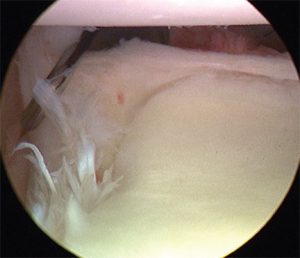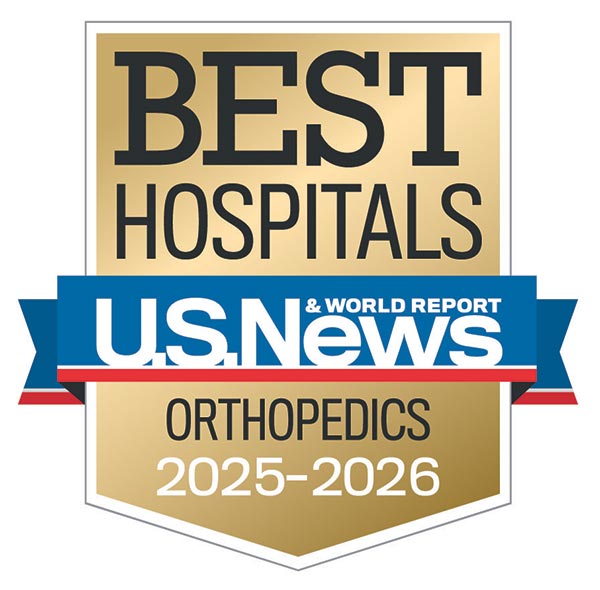Superior Labral Tears in Patients Older Than 40: What is the Best Treatment?
Superior labrum anterior-posterior (SLAP) repair in young athletes has a well-established record of success, marked by relief of pain, improved range of motion, and return to normal levels of activity. Over the past ten years, however, there has been a remarkable five-fold increase in SLAP repairs in older patients. According to Aman Dhawan, MD, Penn State Bone and Joint Institute, “Recently there’s been a lot of controversy about performing arthroscopic SLAP repair in patients older than 40 years of age. I often see these older patients experience SLAP repair-related complications.” The SLAP repair literature is marked by conflicting reports, some showing very good outcomes and others describing poor outcomes in older patients.

Intraoperative arthroscopic image of an acute, traumatic SLAP tear.
To help resolve this controversy, Dhawan and colleagues conducted a comprehensive systematic review of the SLAP repair literature. The findings, recently accepted and soon-to-be published in the American Journal of Sports Medicine1, indicate that compared to younger patients, those over 40 years of age who undergo arthroscopic SLAP repair are more likely to experience post-repair complications. Complications often experienced include pain and stiffness, and this group of patients has a higher likelihood of undergoing revision surgery. Risk of complications increases with patient age and is three times higher in patients over 40 as compared to those younger. Dhawan says, “Our literature analysis indicates that more favorable outcomes, with lower risk of complications, were seen when older patients with symptomatic superior labrum tears underwent biceps tenotomy and tenodesis instead; these also proved to be successful revision procedures for failed SLAP repair.”
Because older adults increasingly stay active well into middle age and beyond, it’s likely they will continue to present with symptomatic superior labrum tears. “The decision to perform arthroscopic SLAP repair in an older patient must really be made on a case-by-case basis, using patient history, physician exam, MRI, and arthroscopy to determine the nature of the problem,” says Dhawan. “Some older patients may exhibit physical conditioning more typical of someone in their thirties, and have arthroscopic findings consistent with an acute trauma-related SLAP injury. In these cases [which form the minority], arthroscopic SLAP repair may be an acceptable choice.”
In many cases, however, the nature of the pathology causing symptoms is more difficult to elucidate. “It’s often a combination of age-related degeneration plus trauma, and may also involve the rotator cuff. Or the symptoms may stem from an old, untreated injury,” explains Dhawan. “In these instances, it’s probably best to proceed very cautiously, perhaps choosing to perform a biceps tenotomy or tenodesis. With all older patients, the high risk of complications associated with SLAP repair should be discussed,” advises Dhawan.

Aman Dhawan, MD
Assistant Professor, Orthopaedics and Sports Medicine
Orthopaedic Sports Medicine Surgeon
Phone: 717-531-5638
Email: adhawan@pennstatehealth.psu.edu
Fellowship: Sports medicine, Rush University, Chicago, Illinois
Residency: Orthopaedic surgery, Walter Reed Army Medical Center, Washington, D.C.
Medical School: Albany Medical College, Albany, New York
Connect with Aman Dhawan, MD, on Doximity
References
- Erickson J, Lavery K, Monica J, Gatt C, Dhawan A. Surgical treatment of symptomatic superior labrum anterior-posterior tears in patients over 40 years of age: a systematic review. Am J Sports Med. 2014; epub ahead of print.

